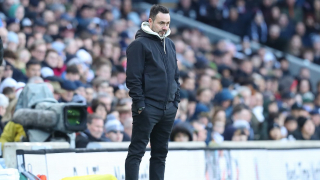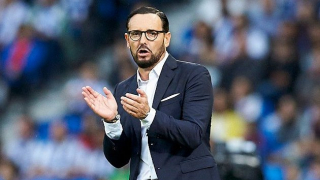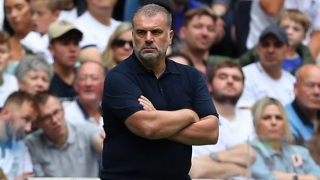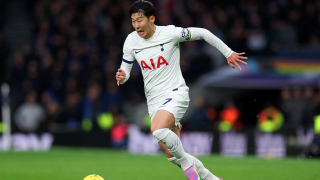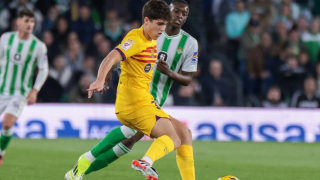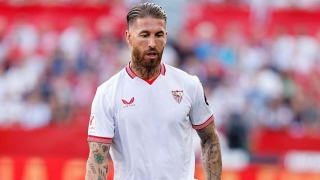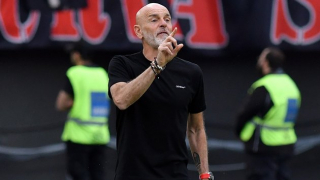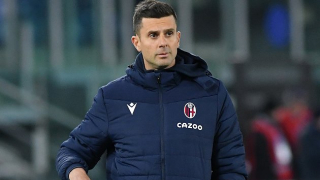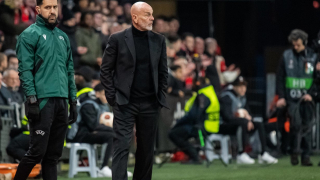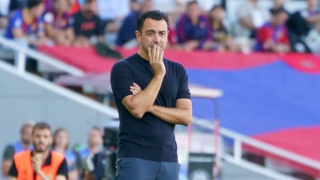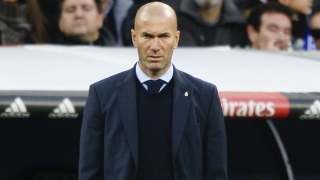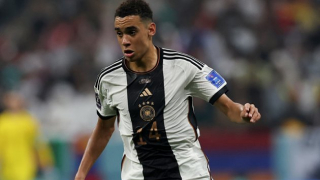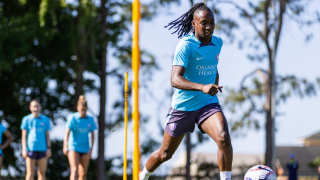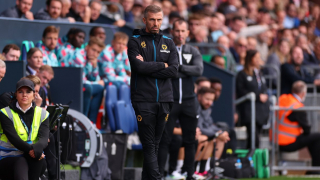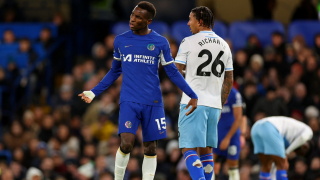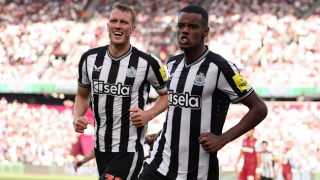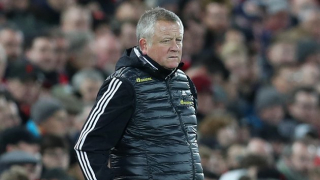Pep Guardiola is widely accepted as one of the greatest managers in football today. Sergio Aguero is generally regarded as one of the finest strikers in the world. When the former joined the latter at Manchester City, it seemed that success was the only possible outcome. However, it hasn't always been so straightforward.
Rewind two years, and forget City's impeccable title wins in 2019 and 2018. Aguero was rumoured to be on his way out, with many questioning whether he and his coach were on the same page tactically. Midway through the first season of their partnership, Gabriel Jesus was brought in, ostensibly to provide competition up front. But soon some were suggesting he was Aguero's successor.
Speaking on Sky Sports, pundit Jamie Carragher was among those to show uncertainty regarding the Argentine forward's future at the club, saying: "A message is being sent to all strikers: No matter how many goals you have scored, if you do not give us certain things, you will not be in the team. And I fear for one of the greatest players we have seen in the Premier League, maybe the greatest goalscorer we have ever seen in the Premier League."
Since then, a lot has changed.
Aguero isn't the first world class striker to come under scrutiny while playing for Guardiola. The Catalan coach was in charge of Barcelona when Zlatan Ibrahimovic was signed for a mega-deal of £60 million plus Samuel Eto'o; one year later, the Swede was shipped out on loan to AC Milan. He, like Aguero, was accused of not conforming to the system.
Recently, Louis van Gaal – one of the most system-focused coaches football has seen in recent decades – discussed the fortunes of Lionel Messi and Barcelona and compared them to those of Aguero and Manchester City since Guardiola arrived. "[With Messi] Guardiola achieved the most difficult thing: the players moved in exactly the right direction at exactly the right time," the Dutchman told El Pais. "Look at Aguero. He played for himself until Guardiola changed him and now moves when he's supposed to. That's the art of coaching."
So, what exactly about Aguero's performance has changed in the last two years?
NUMBERS SHOW AGUERO'S IMPORTANCE
On the surface, not a lot. Certainly when looking purely at the numbers there isn't much to suggest that Guardiola has changed the player drastically.
Aguero's average of one goal per 90 minutes in 2017/18 was his joint-highest in England, as he matched his record from 2013/14. He has averaged 4.3 shots in the last two years, hitting the target with 37.2 and 44.2 per cent of his efforts. In the five seasons previous to Guardiola joining, he generally averaged between 4.5 and five shots at an accuracy of 42.3 to 50 per cent.
Of course, these aren't the numbers of interest to those who propose an individual transformation has taken place. Most of the attention on the striker's performance under Pep is centred on his creative and defensive play.
However, his passing numbers show no sign of a major shift. Aguero averaged the same amount of key passes last season, 1.2 per 90 minutes, as he did in his debut term under Guardiola, and he actually averaged fewer passes last term than he did in 2016/17. And as for his defensive numbers – his average attempted tackles of 0.8 last season was his lowest in a Manchester City shirt.
But what these statistics crucially lack is tactical context. During his early years at the club, when he was achieving personal bests in assists, key passes, passes, pass completion, through balls, tackles and interceptions averaged per 90 minutes, he was also playing a slightly different role.
Roberto Mancini tended to favour using a front two or a taller centre-forward such as Edin Dzeko or Alvaro Negredo. Aguero would thus often play deeper or wider than he does now, behind one of these target-type hitmen, or would play alongside Carlos Tevez or Mario Balotelli up front in a strike pairing.
The above explains why the forward averaged more passes and created more chances – he was naturally getting more involved in build-up due to a deeper or wider starting position. Manuel Pellegrini changed the approach and made Aguero the focal point, but City still didn't dominate possession anywhere near as much as they have under Guardiola, which helps make sense of the fact Aguero is averaging fewer tackles despite seemingly pressing more.
Perhaps the most interesting stats are team ones.
In 2016/17, Aguero missed seven league games through injury or suspension. In those games, Man City won 86 per cent of their games, picked up 2.6 points per game and scored 2.9 goals per game. By contrast, when Aguero was in the team they won just 55 per cent of their games, picking up 1.9 points per game and scoring 1.9 goals per game. On this basis, his team did better without him.
However, this wasn't so much the case in his second campaign under Guardiola's auspices. There was almost no difference whatsoever in points or goals scored per game with or without Aguero, who was absent for 13 league games, while the win percentage only decreased by 12 per cent, not the previous season's 31 per cent, when he was in the line-up.
And last season the transformation was complete. With Aguero, City won 85 per cent of their games, picking up 2.5 points and scoring 2.6 goals per game. In the five games he missed, their win percentage dropped five per cent, the points average dropped by 0.1 per game, and their goals scored average dropped by 0.6 per game.
AGUERO AND POSITIONAL PLAY
The statistics suggest that Aguero's importance to Manchester City's success has grown from season to season during his three years playing for Guardiola. Some might argue that his manager has managed to incorporate the player within the system, though in truth the player has simultaneously helped to make the system work.
'Kun' may not have been at his best in 2016/17, but the two seasons since have shown that to be a mere blip in an otherwise outstanding Premier League career. Since then his decision-making, ingenuity and awareness have helped to make Guardiola's 'positional play' a reality in England.
While playing as the central hub at the front of City's 4-3-3 system, Aguero has combined hitting the opposition box and finishing chances with linking attacks. His movement has been key to the team's ability to progress possession, as he drops deep to get between the lines and between defenders to make himself a viable, penetrative passing option for his teammates.
The 31-year-old also positions himself brilliantly to trouble opponents. He occupies the channels between defenders, effectively pinning two players at once as neither knows who should mark him. And, if he gets into the channel between centre-back and full-back, he can pin the full-back and create space out in the wider areas for the likes of Raheem Sterling, Leroy Sane, Bernardo Silva and Kyle Walker.
His dropping movement also causes problems for defences as centre-backs must decide whether to track him deep and closely mark him, leaving space in their own back line for Sterling and Sane to attack from wide or for Kevin De Bruyne and David Silva to run into from deep, or allow him to wander and create an overload to enable City to play through the thirds with greater ease. These qualities – his movement and positional intelligence – are difficult to show with numbers, but that doesn't mean they aren't there, or that these aspects of his play aren't vital.
It is well within reason to argue that, since 2017, Guardiola has gotten the best out of Aguero. However, at the same time, the opposite is true: Aguero has also allowed his manager's tactics to shine.

